Power Vacuum Brake Booster Replacement Without RPO LAT
Caution: Refer to Brake Fluid Irritant Caution in the Preface section.
Notice: Refer to Brake Fluid Effects on Paint and Electrical Components Notice in the Preface section.
Notice: Always connect or disconnect the wiring harness connector from the EBCM/EBTCM with the ignition switch in the OFF position. Failure to observe this precaution could result in damage to the EBCM/EBTCM.
Removal Procedure
- Turn the ignition switch to the OFF position.
- Clean the brake pressure modulator valve (BPMV) pipe fitting areas of any accumulated dirt and foreign material.
- Disconnect the electrical connector from the electronic brake control module (EBCM).
- Place a shop towel under the BPMV to catch any brake fluid loss.
- Disconnect the RF brake pipe fitting (1).
- Disconnect the LR brake pipe fitting (1).
- Disconnect the RR brake pipe fitting (1).
- Disconnect the LF brake pipe fitting (1).
- Deplete the vacuum reserve from the vacuum brake booster by removing the vacuum check valve (1) from the vacuum brake booster grommet.
- Raise and support the vehicle. Refer to Lifting and Jacking the Vehicle.
- Remove the left front tire and wheel assembly. Refer to Tire and Wheel Removal and Installation.
- Remove the 3 BPMV bracket nuts (1).
- Lower the vehicle.
- Remove the master cylinder nuts (1).
- Remove the master cylinder and the EBCM/BPMV and bracket as an assembly from the vehicle.
- Remove the instrument panel insulator panel. Refer to Instrument Panel Insulator Panel Replacement - Left Side.
- Disconnect the brake pedal position sensor electrical connector.
- Remove the 2 brake pedal assembly nuts.
- Remove the brake pedal pushrod retainer clip (1).
- Remove the wave washers (2) and disconnect the brake pedal pushrod (3) from the pedal pivot pin (4).
- Tilt the vacuum brake booster upward slightly and remove the booster from the vehicle.
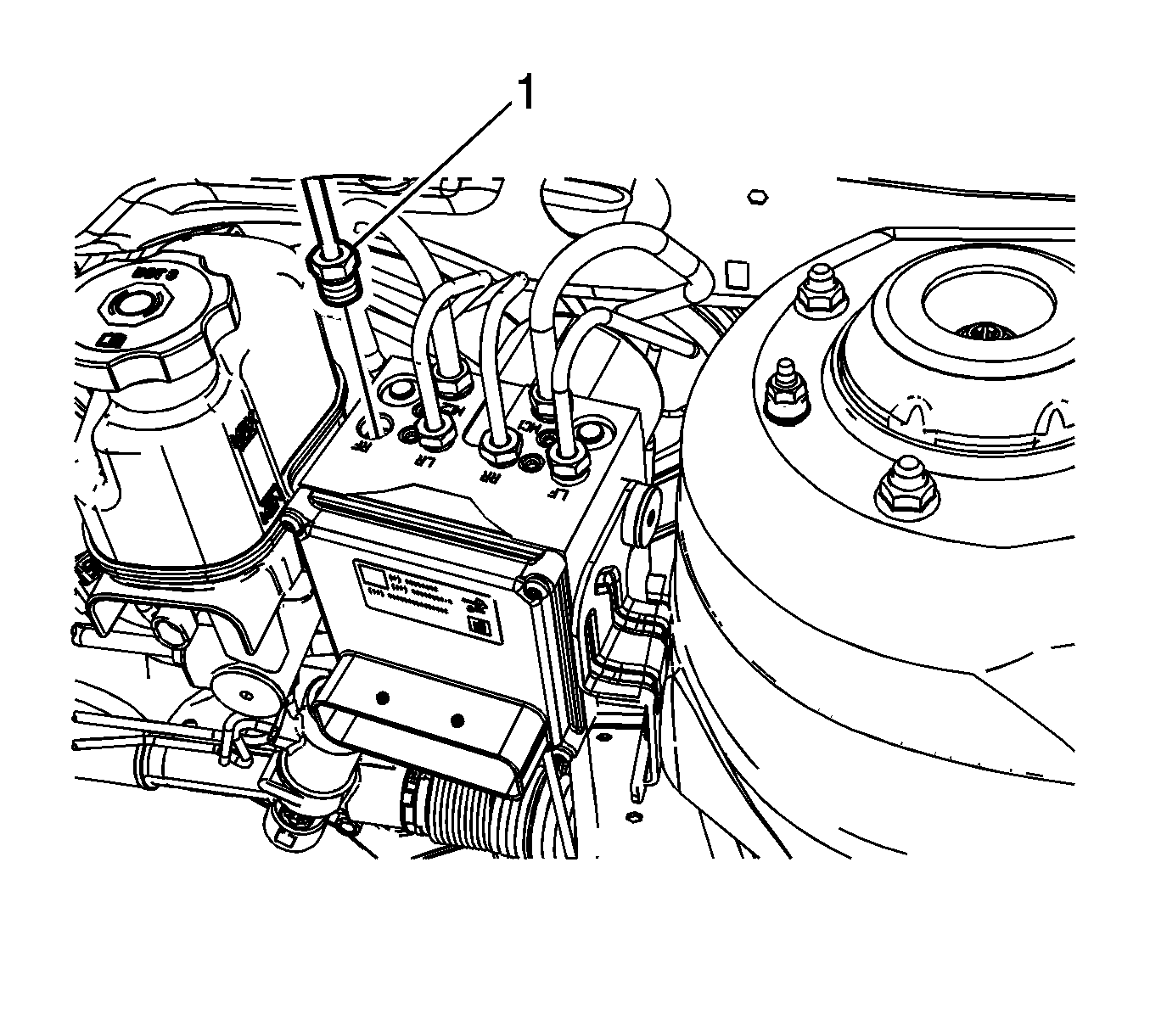
Cap the brake pipe fitting and plug the BPMV outlet port to prevent brake fluid loss and contamination.
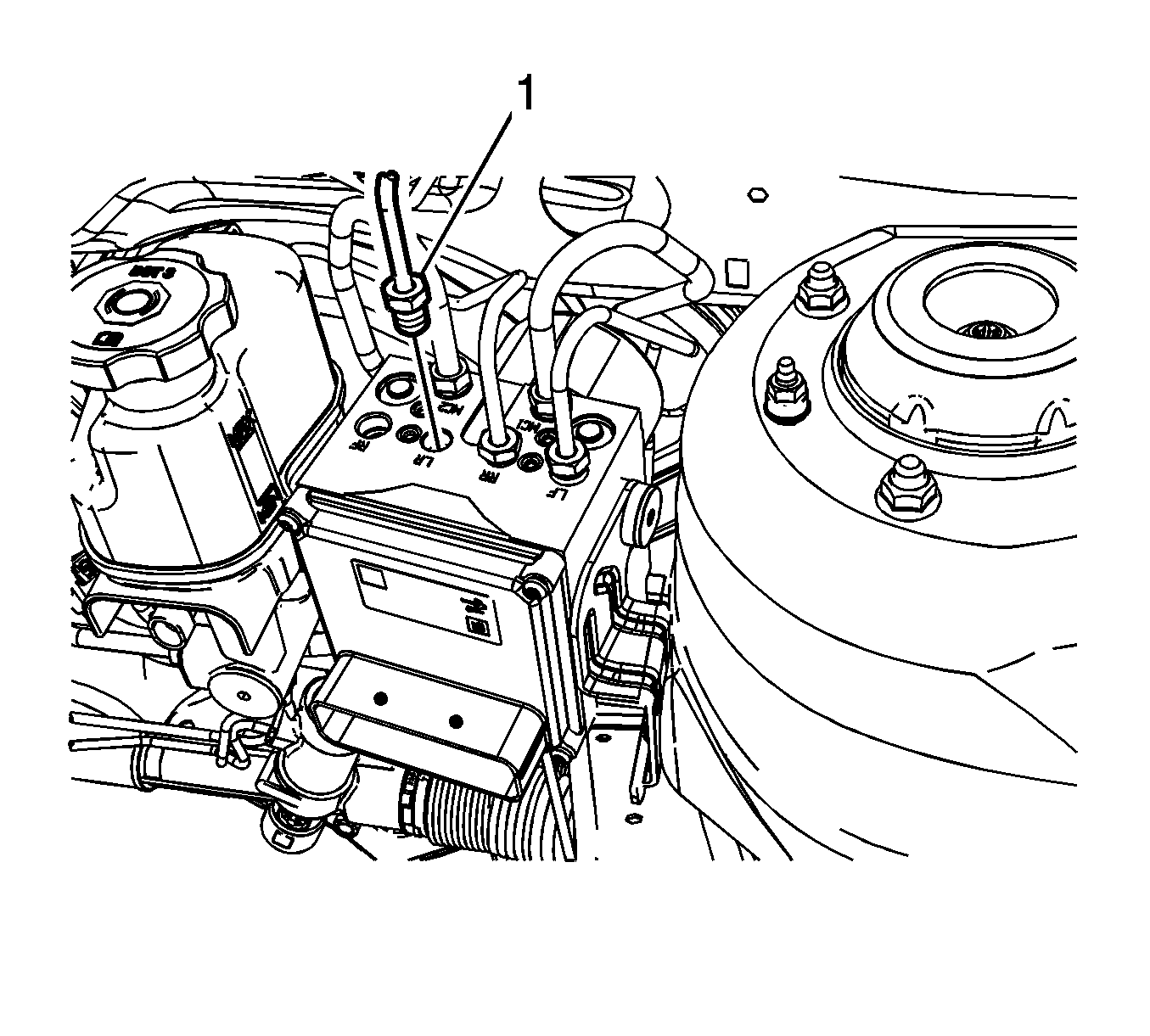
Cap the brake pipe fitting and plug the BPMV outlet port to prevent brake fluid loss and contamination.

Cap the brake pipe fitting and plug the BPMV outlet port to prevent brake fluid loss and contamination.
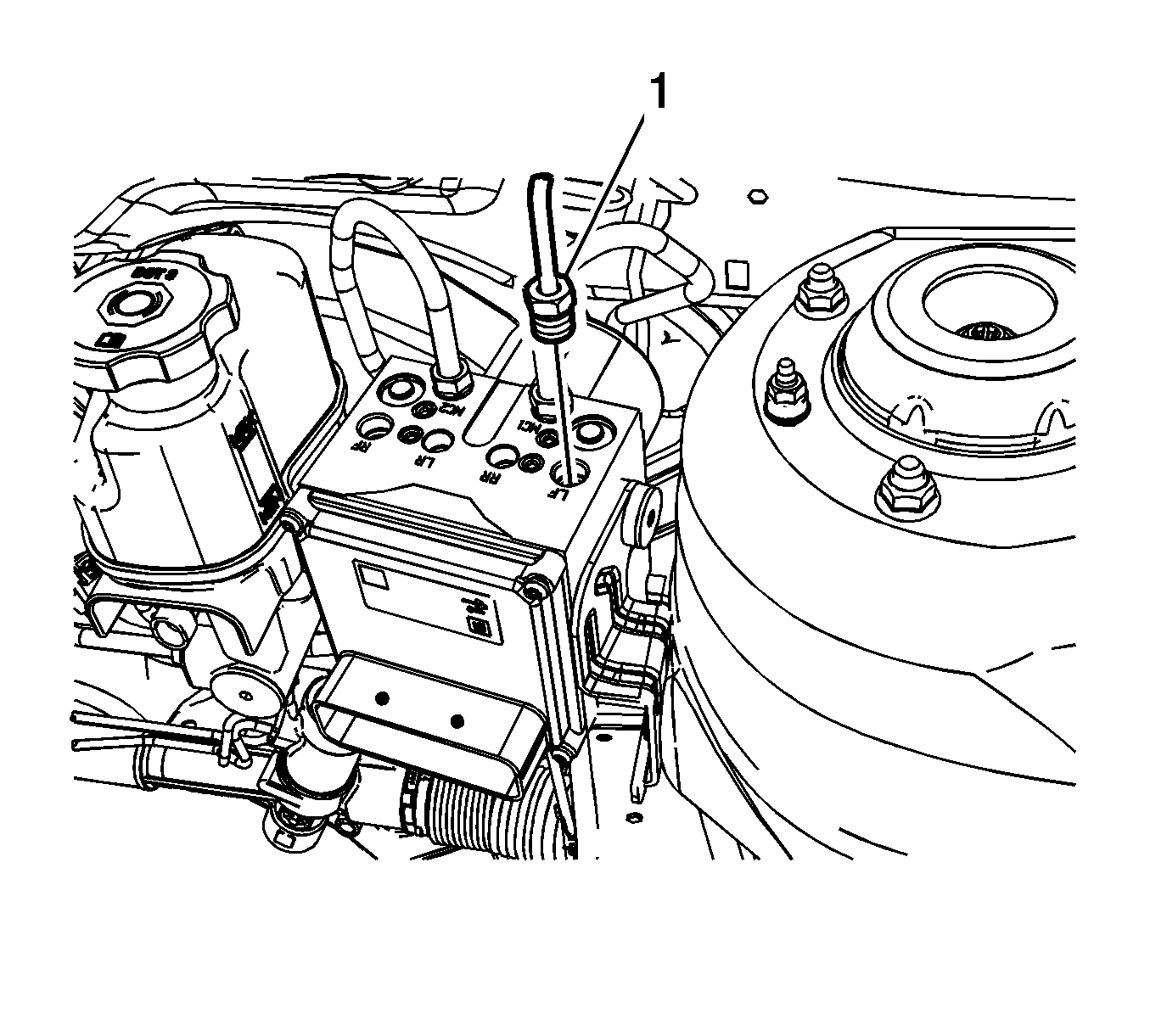
Cap the brake pipe fitting and plug the BPMV outlet port to prevent brake fluid loss and contamination.
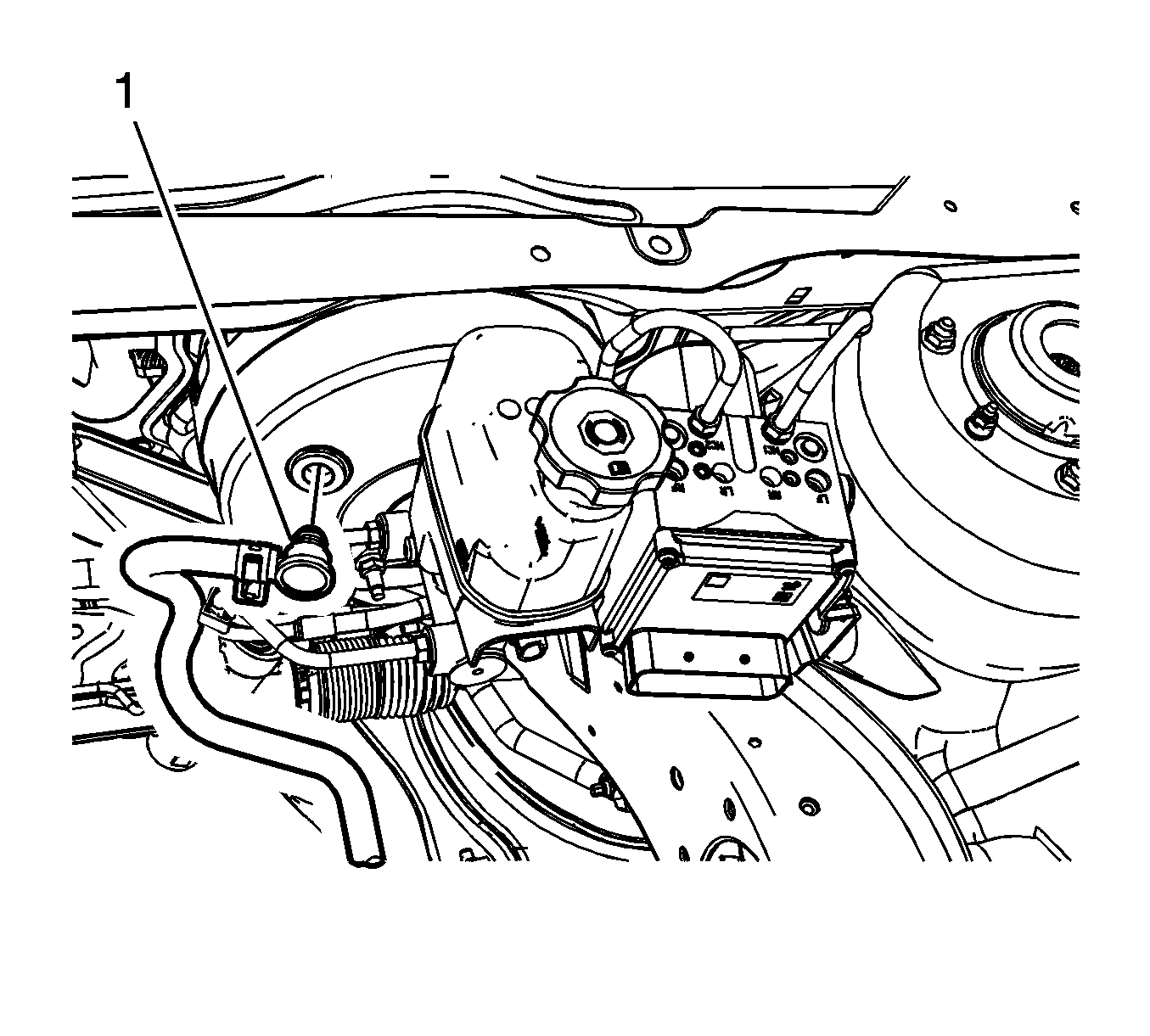
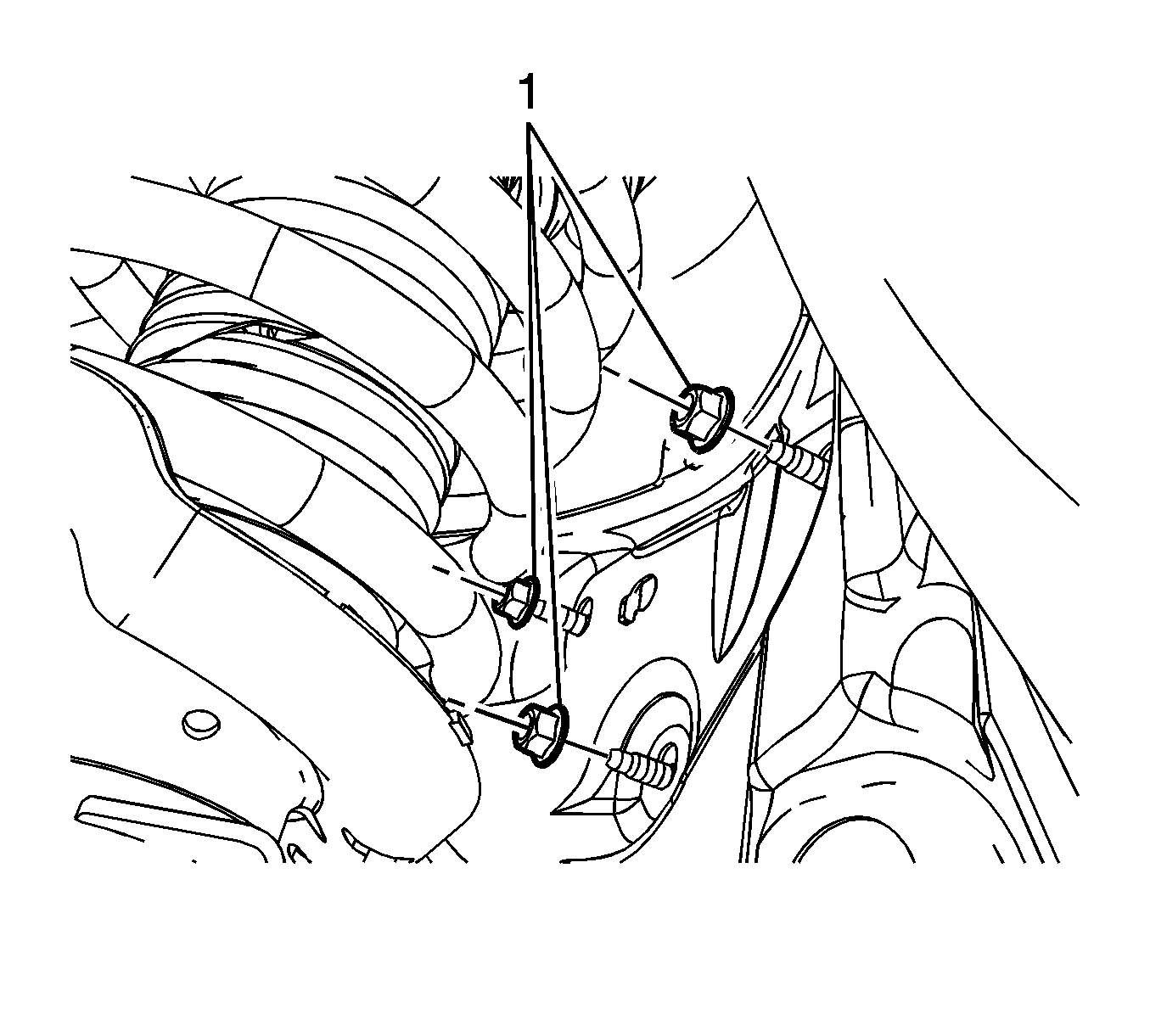

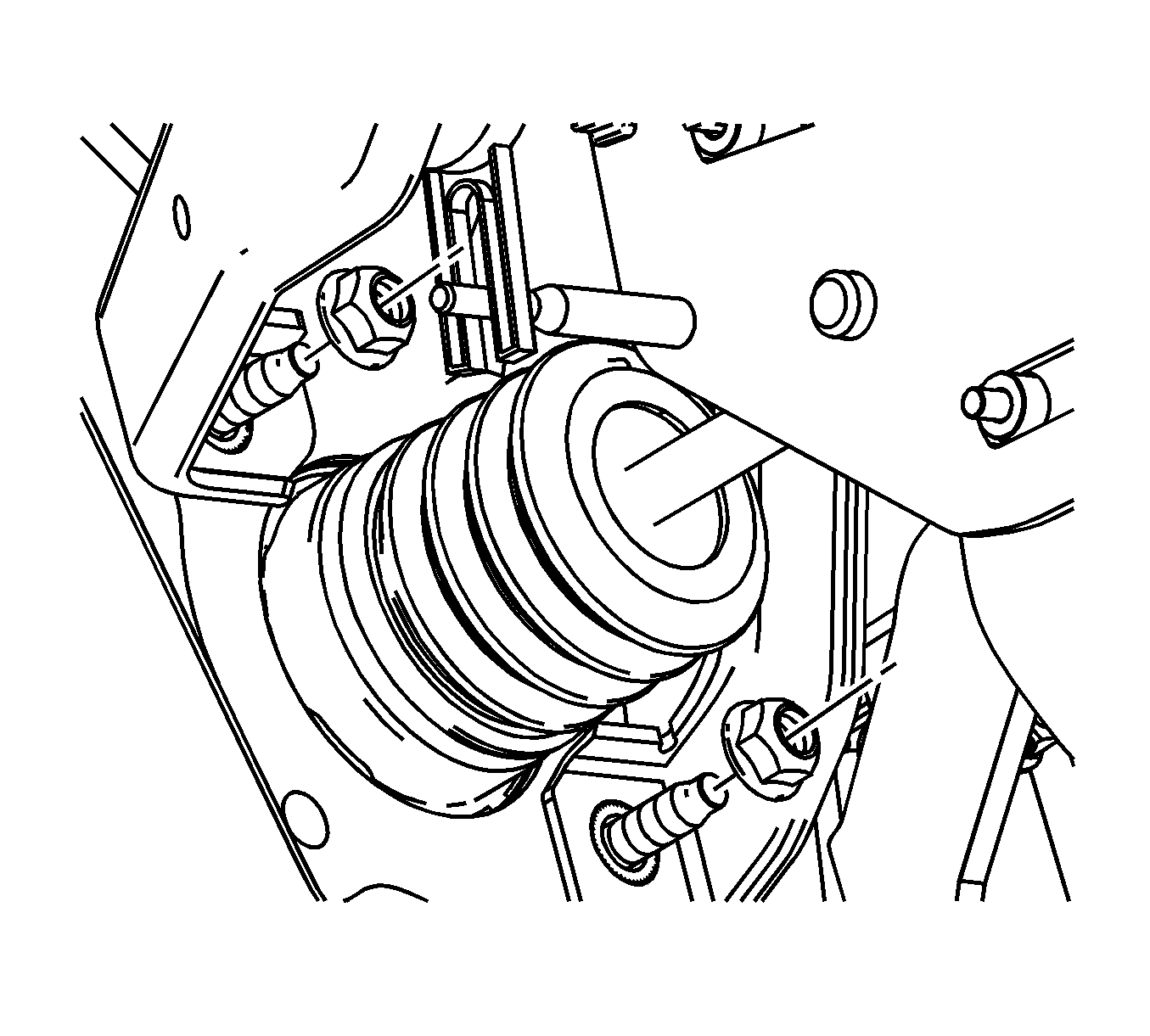
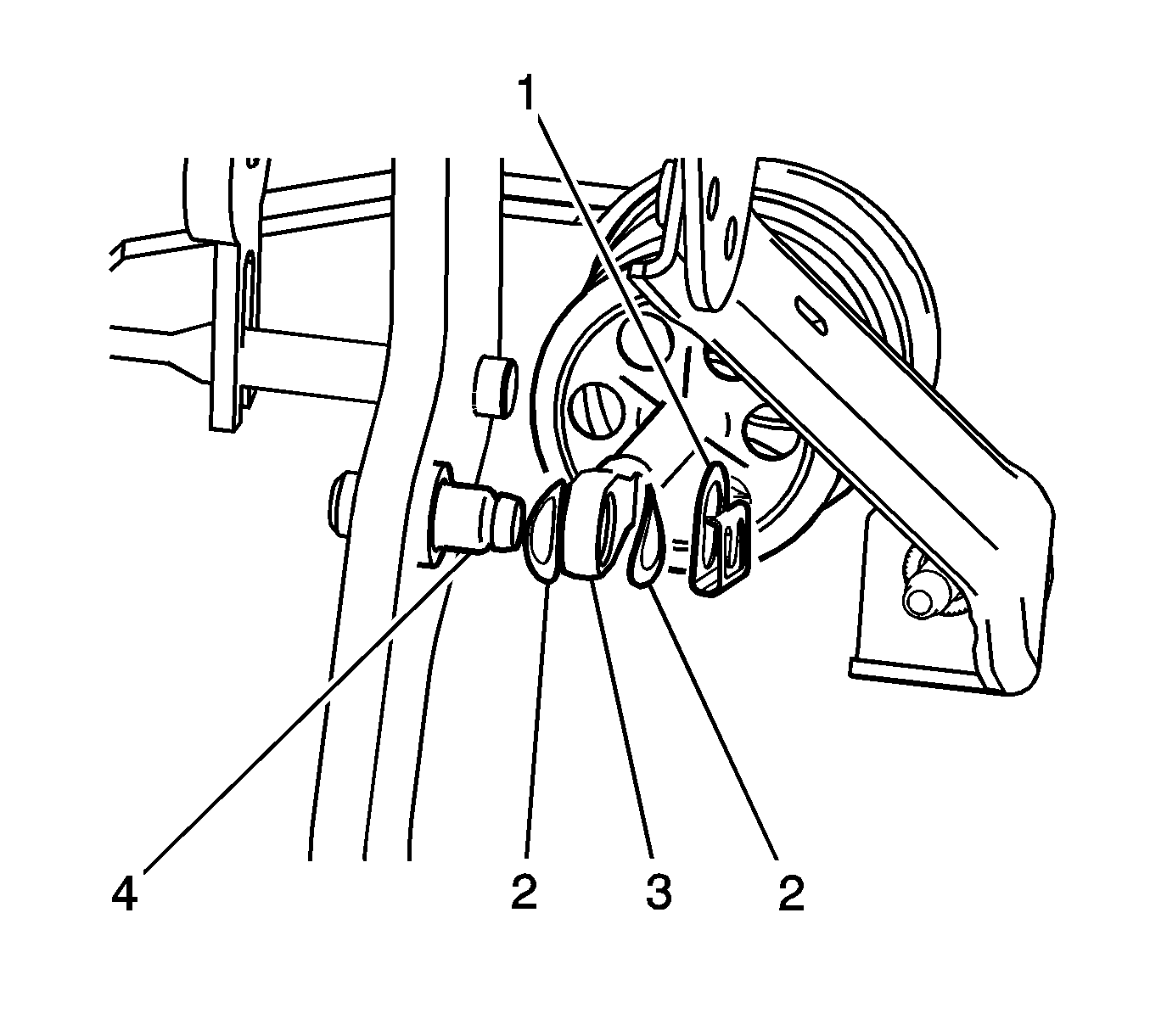
Do not apply excessive side pressure on the pushrod.
Installation Procedure
- Maneuver the vacuum brake booster into position in the vehicle.
- Install the (2) brake pedal assembly nuts.
- Install the wave washers (2) and connect the brake pedal pushrod (3) to the pedal pivot pin (4).
- Install the brake pedal pushrod retainer clip (1).
- Connect the brake pedal position sensor electrical connector.
- Install the instrument panel insulator panel. Refer to Instrument Panel Insulator Panel Replacement - Left Side.
- Inspect the seal on the master cylinder for damage and replace, if necessary.
- Install the master cylinder and the EBCM/BPMV and bracket assembly to the vehicle.
- Install the master cylinder nuts (1).
- Raise and support the vehicle.
- Install the 3 BPMV bracket nuts (1).
- Install the left front tire and wheel assembly. Refer to Tire and Wheel Removal and Installation.
- Lower the vehicle.
- Install the vacuum check valve (1) to the vacuum brake booster grommet.
- Connect the LF brake pipe fitting (1).
- Connect the RR brake pipe fitting (1).
- Connect the LR brake pipe fitting (1).
- Connect the RF brake pipe fitting (1).
- Connect the EBCM electrical connector.
- Bleed the hydraulic brake system. Refer to Hydraulic Brake System Bleeding.
- Calibrate the brake pedal position sensor. Refer to Brake Pedal Position Sensor Calibration.

Notice: Refer to Fastener Notice in the Preface section.
Tighten
Tighten the nuts to 15 N·m (11 lb ft).

Do not apply excessive side pressure on the pushrod.

Ensure the seal is properly positioned on the body of the master cylinder.
Tighten
Tighten the nuts to 25 N·m (18 lb ft).

Tighten
Tighten the nuts to 10 N·m (89 lb in).

If necessary, a small amount of denatured alcohol may be used as a lubricant for assembly. Do not use soap.

Tighten
Tighten the fitting to 20 N·m (15 lb ft).

Tighten
Tighten the fitting to 20 N·m (15 lb ft).

Tighten
Tighten the fitting to 20 N·m (15 lb ft).

Tighten
Tighten the fitting to 20 N·m (15 lb ft).
Important: Ensure the electrical connector is correctly inserted into the EBCM prior to placing the locking lever into position. Failure to make a proper connection may cause communication problems with the module.
Power Vacuum Brake Booster Replacement With RPO LAT
Caution: Refer to Brake Fluid Irritant Caution in the Preface section.
Notice: Refer to Brake Fluid Effects on Paint and Electrical Components Notice in the Preface section.
Removal Procedure
- Turn the ignition to the OFF position.
- Raise and support the vehicle. Refer to Lifting and Jacking the Vehicle .
- Remove the left front tire and wheel assembly. Refer to Tire and Wheel Removal and Installation .
- Remove the 3 nuts that attach the electronic brake control module (EBCM)/brake pressure modulator valve (BPMV) bracket to the left front wheelhouse.
- Disconnect the power brake booster vacuum sensor electrical connector, if equipped.
- Disconnect the brake master cylinder pressure sensor electrical connector, if equipped.
- Lower the vehicle.
- Disconnect the electrical connector from the EBCM.
- Without disconnecting the hoses, position aside the radiator surge tank. Refer to Radiator Surge Tank Replacement .
- Deplete the vacuum from the vacuum brake booster by removing the vacuum check valve (1) from the vacuum brake booster grommet (4). Do not disconnect the vacuum check valve from the vacuum brake hose (3).
- Remove the 4 brake pipes (2) from the BPMV.
- Remove the master cylinder nuts from the vacuum brake booster.
- Remove the EBCM/BPMV bracket assembly with the brake master cylinder.
- Remove the closeout panel. Refer to Instrument Panel Insulator Panel Replacement - Left Side .
- Remove the electrical connector from the brake apply sensor.
- Remove the 2 brake pedal assembly to cowl mounting nuts.
- Disconnect the brake pedal pushrod retaining clip (1) the wave washers (2) and the brake booster pushrod (3) from the brake pedal pin (4).
- Remove the booster from the vehicle.
Notice: Always connect or disconnect the wiring harness connector from the EBCM/EBTCM with the ignition switch in the OFF position. Failure to observe this precaution could result in damage to the EBCM/EBTCM.
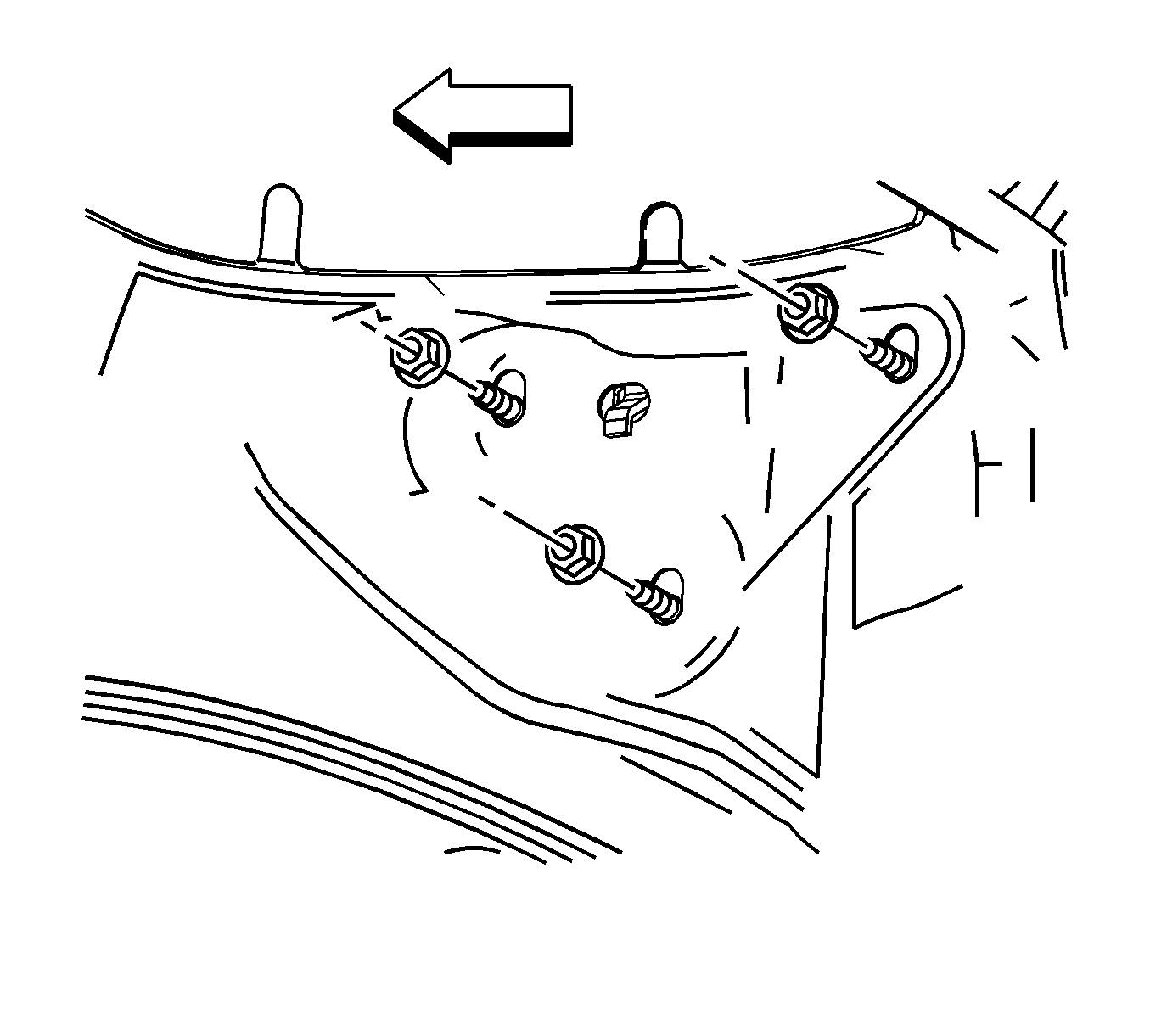

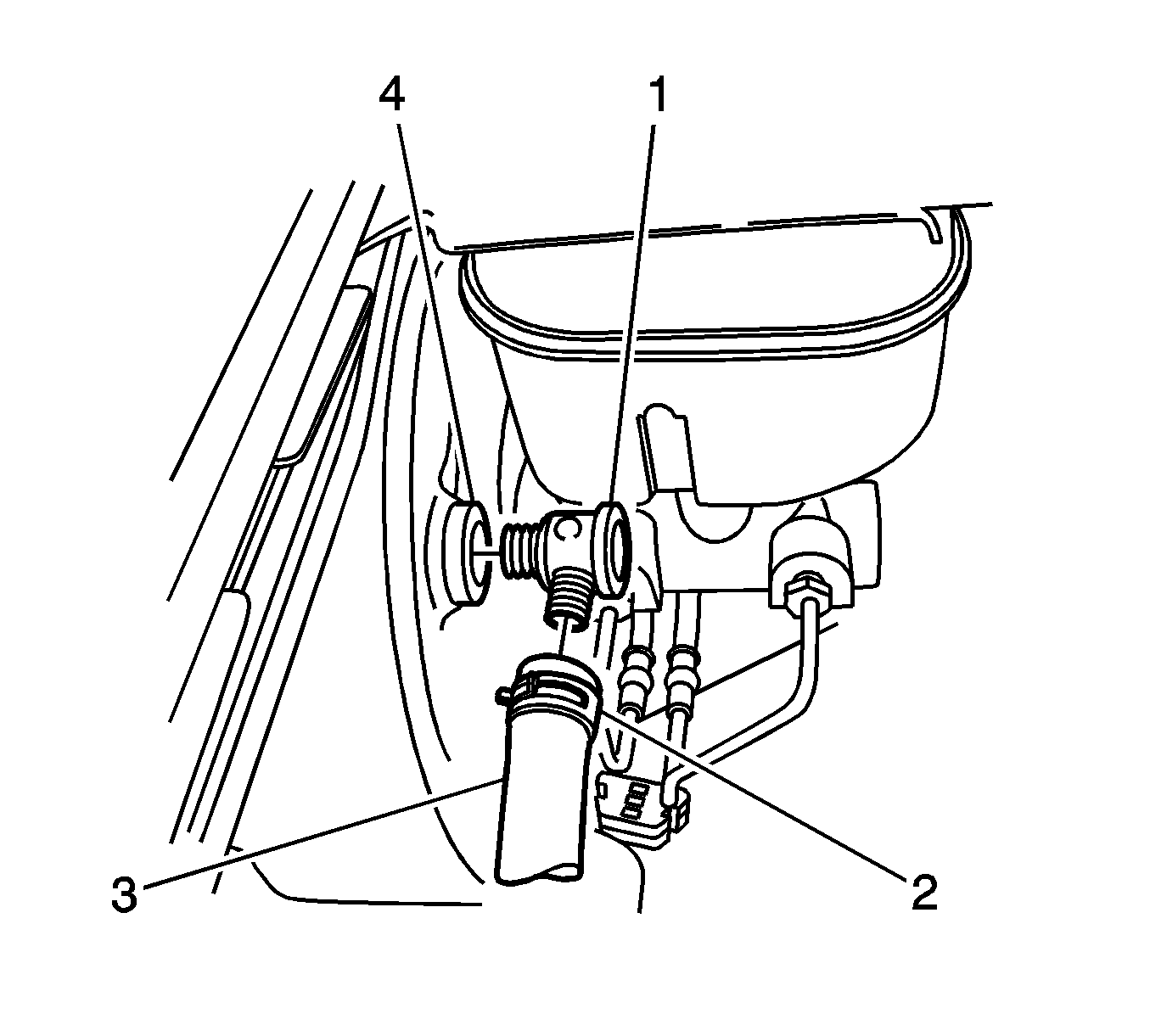
Important: Cap the brake pipe fittings to prevent brake fluid loss and contamination.
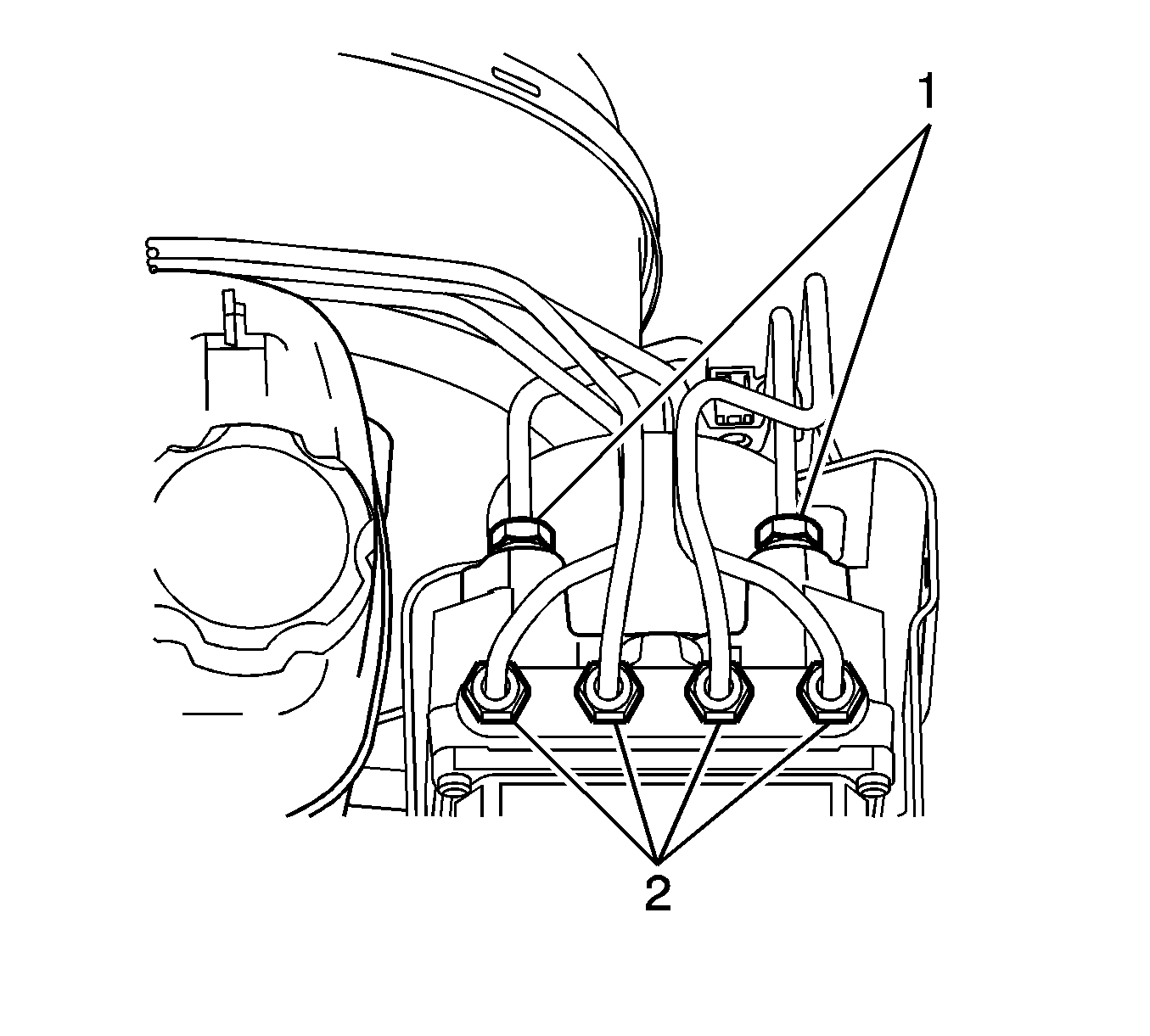
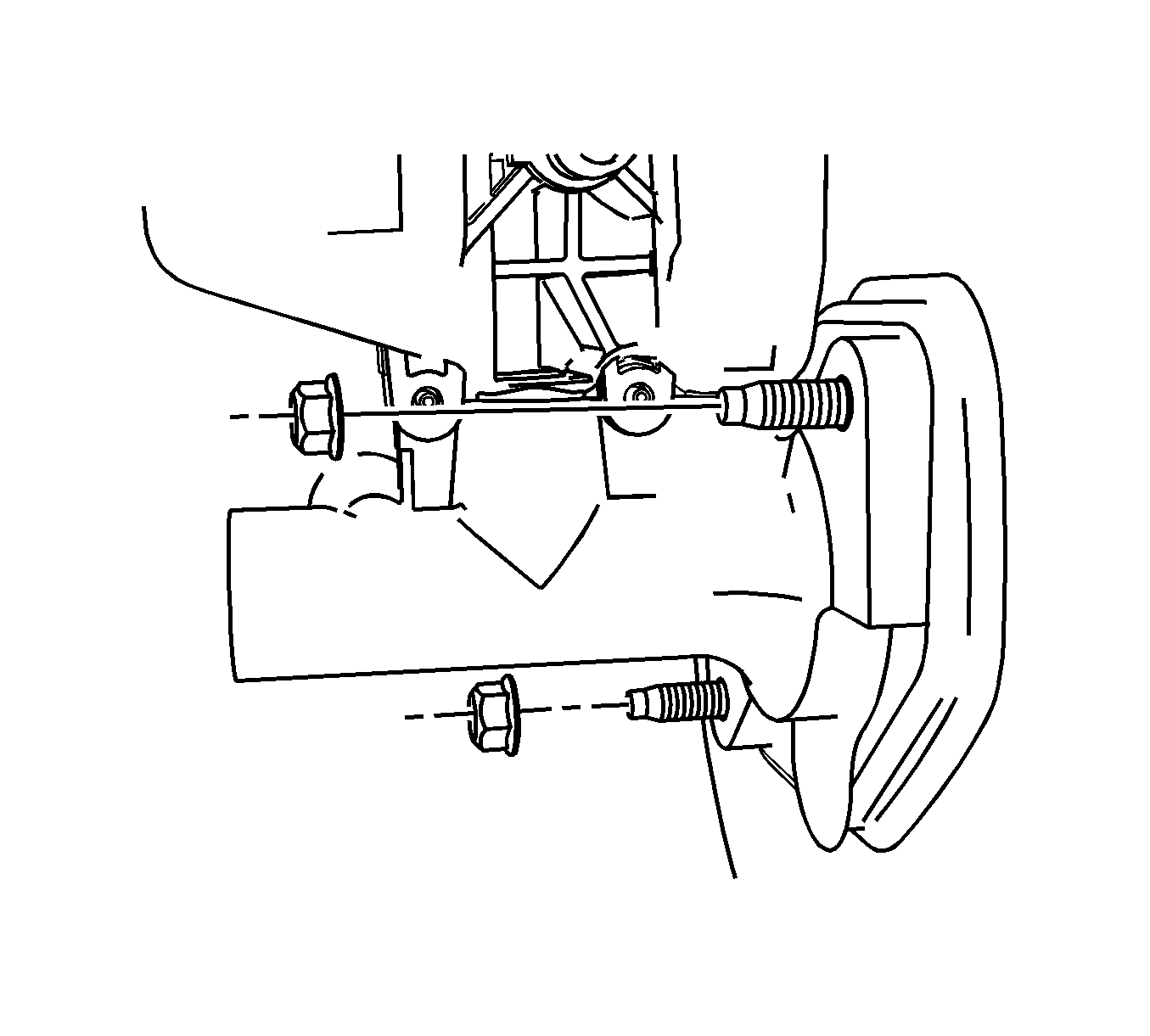
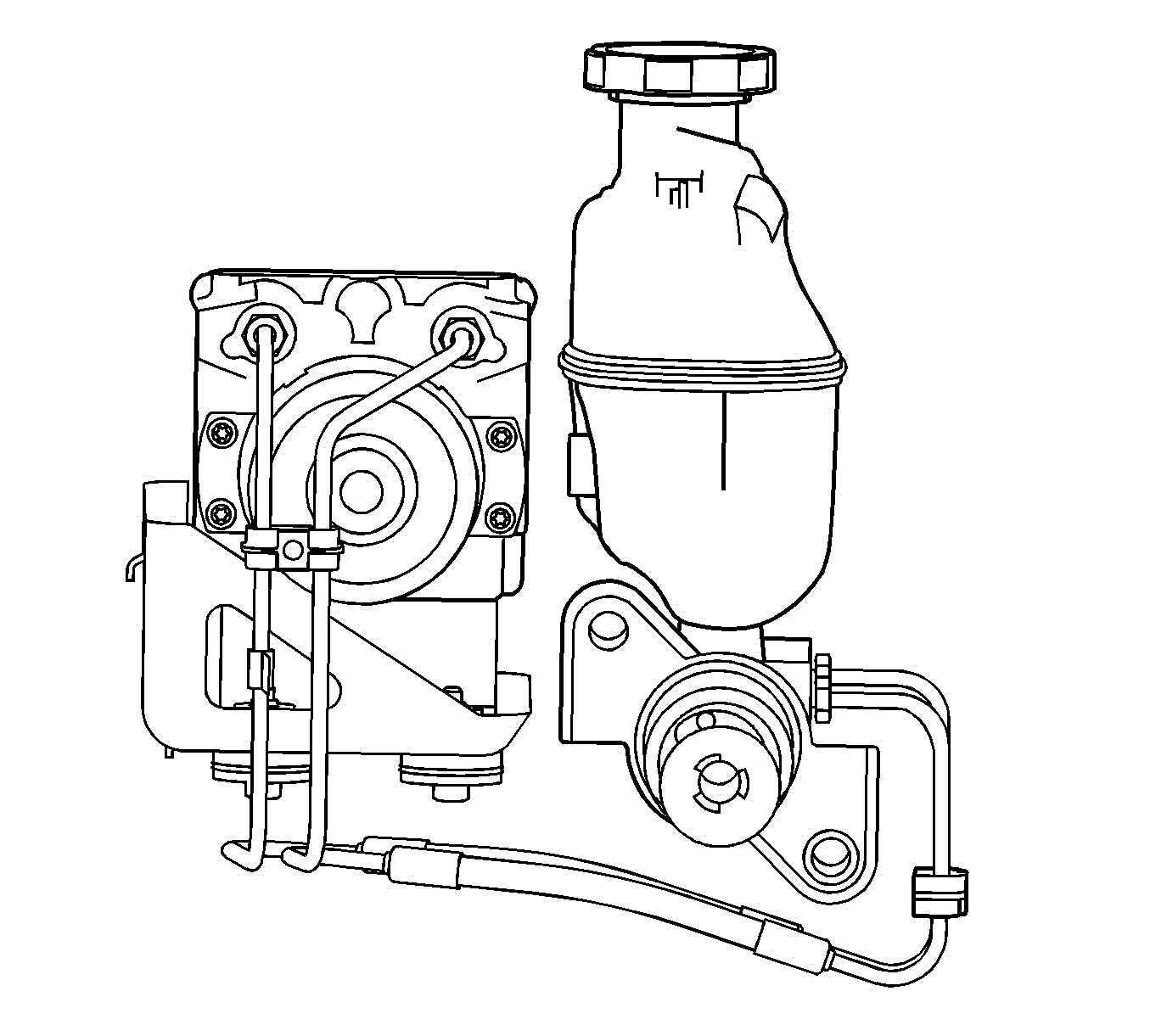


Tilt the vacuum brake booster slightly in order to work the booster pushrod off the brake pedal pin. Do not apply excessive side pressure on the pushrod.
Installation Procedure
- Install the booster to the vehicle.
- Tilt the vacuum brake booster slightly in order to work the booster pushrod onto the brake pedal pin. Do not apply excessive side pressure on the pushrod. Align the pushrod with the pedal and assemble.
- Connect the brake pedal pushrod retaining clip (1) the wave washers (2) and the brake booster pushrod (3) to the brake pedal pin (4).
- Install the 2 brake pedal assembly to cowl mounting nuts.
- Install the electrical connector to the brake apply sensor.
- Install the closeout panel. Refer to Instrument Panel Insulator Panel Replacement - Left Side .
- Install the EBCM/BPMV bracket assembly and the master cylinder to the vehicle.
- Install the master cylinder nuts to the vacuum brake booster.
- Raise the vehicle.
- Install the 3 nuts that attach the EBCM/BPMV bracket assembly to the left wheelhouse.
- Connect the power brake booster vacuum sensor electrical connector, if equipped.
- Connect the brake master cylinder pressure sensor electrical connector, if equipped.
- Install the left front tire and wheel assembly. Refer to Tire and Wheel Removal and Installation .
- Lower the vehicle.
- Install the 4 brake pipes (2) to the BPMV.
- Connect the electrical connector to the EBCM.
- Connect the vacuum brake booster check valve (1) to the vacuum brake booster grommet (4).
- Position the radiator surge tank to the bracket. Refer to Radiator Surge Tank Replacement .
- Bleed the hydraulic brake system. Refer to Hydraulic Brake System Bleeding .
- Calibrate the brake pedal position sensor. Refer to Brake Pedal Position Sensor Calibration .

Notice: Refer to Fastener Notice in the Preface section.

Tighten
Tighten the nuts to 15 N·m (11 lb ft).


Important: Ensure the gasket on the outside barrel of the master cylinder is positioned properly and is free of cuts and tears.
Tighten
Tighten the nuts to 25 N·m (18 lb ft).

Tighten
Tighten the nuts to 10 N·m (89 lb in).

Tighten
Tighten the pipes to 20 N·m (15 lb ft).


